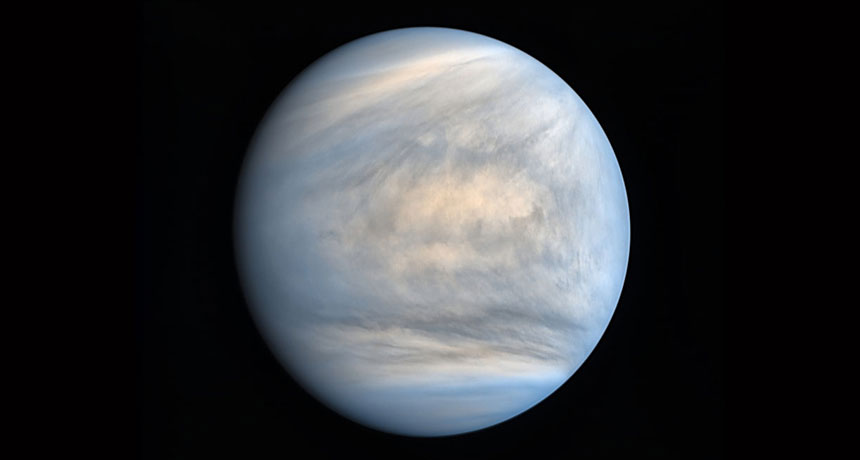What will it take to go to Venus?
Despite no go-ahead for missions, scientists are still trying to get to Earth’s evil twin

BLUE MARBLE From the outside, you would never know how hostile Venus’ surface is. This false-color image of Venus from the Akatsuki spacecraft shows a cloud-covered atmosphere as complex and dynamic as Earth’s.
Damia Bouic/DARTS/ISAS/JAXA